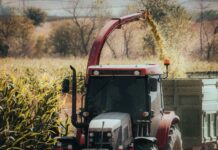Climate change is impacting the agricultural sector in a widespread way. The global hunger rate is also rising, increasing the demand for vegetation-preservation measures. Residents and farmers can enhance crop production by minimizing adverse ecological effects.
The sun may cause long-term damage to gardens and farms. Individuals can prepare their crops for the summer heat by expanding their education. There are five ways agricultural workers may protect their plants from the sun and heat.
Why Is Sun Exposure Bad for Plants?
In grade school, students learn about photosynthesis. Teachers explain that sunlight and water cause plants to grow and produce food. As the climate changes, heightened sun exposure and temperatures affect the photosynthesis process.
Light-intensive plants may benefit from increased sun exposure, and low-light plants experience adverse effects. Researchers at Michigan State University explored the impacts of sunlight exposure on crops. They discovered that the chloroplast thylakoid membrane protein (MPH2) influenced plant repair in extreme light conditions.
MPH2 repairs the photosynthesis II (PSII) process. Excessive sunlight can cause PSII deficiencies, damaging a crop’s reaction center. Farmers and residential gardeners must protect MPH2 and PSII by minimizing excessive sunlight exposure.
Individuals must also protect soil from intensive light exposure. Too much sunlight can deplete soil nutrients through evaporation, causing erosion. Some farmers directly prevent light exposure by applying shade cloths to their crops.
1. Shade Cloth
In southern regions, many farmers place shade cloths over their crops. The cloths reduce overheating and sun damage. Manufacturers develop the products from polyester or polyethylene materials.
Applying shade cloths is a cost-effective response to climate change effects. The materials cost up to $0.30 per square foot and are easy to install. Shade cloths last up to 10 years.
2. Plant Sunblock
Manufacturers also create sunblock for plants, which is similar to human-grade sunscreen. Individuals can apply kaolin mineral solutions to crops and minimize negative light and heat effects. The substance creates a film barrier on plants, which decreases direct light exposure.
Farmers and gardeners can easily spray the substance on their crops. Individuals should source environmental protection agency (EPA) regulated solutions for their plants. The EPA mineral spray also protects crops from pest interference, minimizing food and resource waste.
3. Solar Panels
Some farmers are also targeting the cause of climate change and actively preventing current damage with solar panels. Individuals can place their crops under panels to reduce light exposure while producing emission-free electricity.
One farmer is growing their salsa ingredients under photovoltaic (PV) solar panels. In doing so, they are protecting their peppers, tomatoes, and cilantro from PSII damage. When individuals use panels in farming, they minimize their water use as well. They also access low-cost electricity supplies for additional agricultural needs.
4. Indoor Vertical Gardens
Another damage prevention method involves vertical farming techniques. Indoor vertical gardens are compatible with urban spaces. Large cities experience adverse temperature changes from the heat island effect in the summer.
Vertical farms prevent sunlight damage by moving plants indoors. NASA built the first vertical garden to explore agricultural options in space. Professionals used lighting, ventilation, and circulatory water systems to support crop development.
Individuals can control lighting indoors using advanced technological systems. Using regulatory technology, gardeners and farmers may reduce hunger rates. The farming method also minimizes water use, decreasing resource exploitation.
5. Smart Sprinklers
The final crop protection method relies on smart sprinklers. As global temperatures rise, the evaporation rate follows. Keeping the soil moist is essential for crop production and protection.
Individuals can install smart sprinklers to minimize soil erosion. The sprinklers use the internet of things (IoT) to regulate watering patterns based on real-time weather. Smart sprinklers reduce overwatering and underwatering using advanced technology.
When Should You Apply Crop Protection Measures?
Spring is the best time to install smart sprinklers, shade cloths, or other crop protection devices. High sun exposure is also damaging to humans’ health. Individuals should minimize their time in the sun to reduce overheating and burns – and the same goes for crops.
 Jane Marsh:Editor-in-Chief @Environment
Jane Marsh:Editor-in-Chief @Environment







